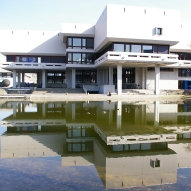| Dokumentenart: | Artikel | ||||
|---|---|---|---|---|---|
| Titel eines Journals oder einer Zeitschrift: | Microbiome | ||||
| Verlag: | BIOMED CENTRAL LTD | ||||
| Ort der Veröffentlichung: | LONDON | ||||
| Band: | 5 | ||||
| Nummer des Zeitschriftenheftes oder des Kapitels: | 1 | ||||
| Datum: | 2017 | ||||
| Institutionen: | Biologie und Vorklinische Medizin > Institut für Biochemie, Genetik und Mikrobiologie > Lehrstuhl für Mikrobiologie (Archaeenzentrum) | ||||
| Identifikationsnummer: |
| ||||
| Stichwörter / Keywords: | ARTIFICIAL METEORITES; PLANETARY PROTECTION; ATMOSPHERIC ENTRY; EXPOSE-E; SURVIVAL; SPORES; MICROORGANISMS; METHANE; MARS; IDENTIFICATION; ExoMars; Planetary protection; Life-detection; Astrobiology; Cleanroom microbiota | ||||
| Dewey-Dezimal-Klassifikation: | 500 Naturwissenschaften und Mathematik > 580 Pflanzen (Botanik) | ||||
| Status: | Veröffentlicht | ||||
| Begutachtet: | Ja, diese Version wurde begutachtet | ||||
| An der Universität Regensburg entstanden: | Ja | ||||
| Dokumenten-ID: | 39658 |

 Web of Science
Web of ScienceZusammenfassung
Background: The ExoMars 2016 mission, consisting of the Trace Gas Orbiter and the Schiaparelli lander, was launched on March 14 2016 from Baikonur, Kazakhstan and reached its destination in October 2016. The Schiaparelli lander was subject to strict requirements for microbial cleanliness according to the obligatory planetary protection policy. To reach the required cleanliness, the ExoMars 2016 ...

Zusammenfassung
Background: The ExoMars 2016 mission, consisting of the Trace Gas Orbiter and the Schiaparelli lander, was launched on March 14 2016 from Baikonur, Kazakhstan and reached its destination in October 2016. The Schiaparelli lander was subject to strict requirements for microbial cleanliness according to the obligatory planetary protection policy. To reach the required cleanliness, the ExoMars 2016 flight hardware was assembled in a newly built, biocontrolled cleanroom complex at Thales Alenia Space in Turin, Italy. In this study, we performed microbiological surveys of the cleanroom facilities and the spacecraft hardware before and during the assembly, integration and testing (AIT) activities. Methods: Besides the European Space Agency (ESA) standard bioburden assay, that served as a proxy for the microbiological contamination in general, we performed various alternative cultivation assays and utilised molecular techniques, including quantitative PCR and next generation sequencing, to assess the absolute and relative abundance and broadest diversity of microorganisms and their signatures in the cleanroom and on the spacecraft hardware. Results: Our results show that the bioburden, detected microbial contamination and microbial diversity decreased continuously after the cleanroom was decontaminated with more effective cleaning agents and during the ongoing AIT. The studied cleanrooms and change room were occupied by very distinct microbial communities: Overall, the change room harboured a higher number and diversity of microorganisms, including Propionibacterium, which was found to be significantly increased in the change room. In particular, the so called alternative cultivation assays proved important in detecting a broader cultivable diversity than covered by the standard bioburden assay and thus completed the picture on the cleanroom microbiota. Conclusion: During the whole project, the bioburden stayed at acceptable level and did not raise any concern for the ExoMars 2016 mission. The cleanroom complex at Thales Alenia Space in Turin is an excellent example of how efficient microbiological control is performed.
Metadaten zuletzt geändert: 25 Nov 2020 15:47




 Altmetric
Altmetric